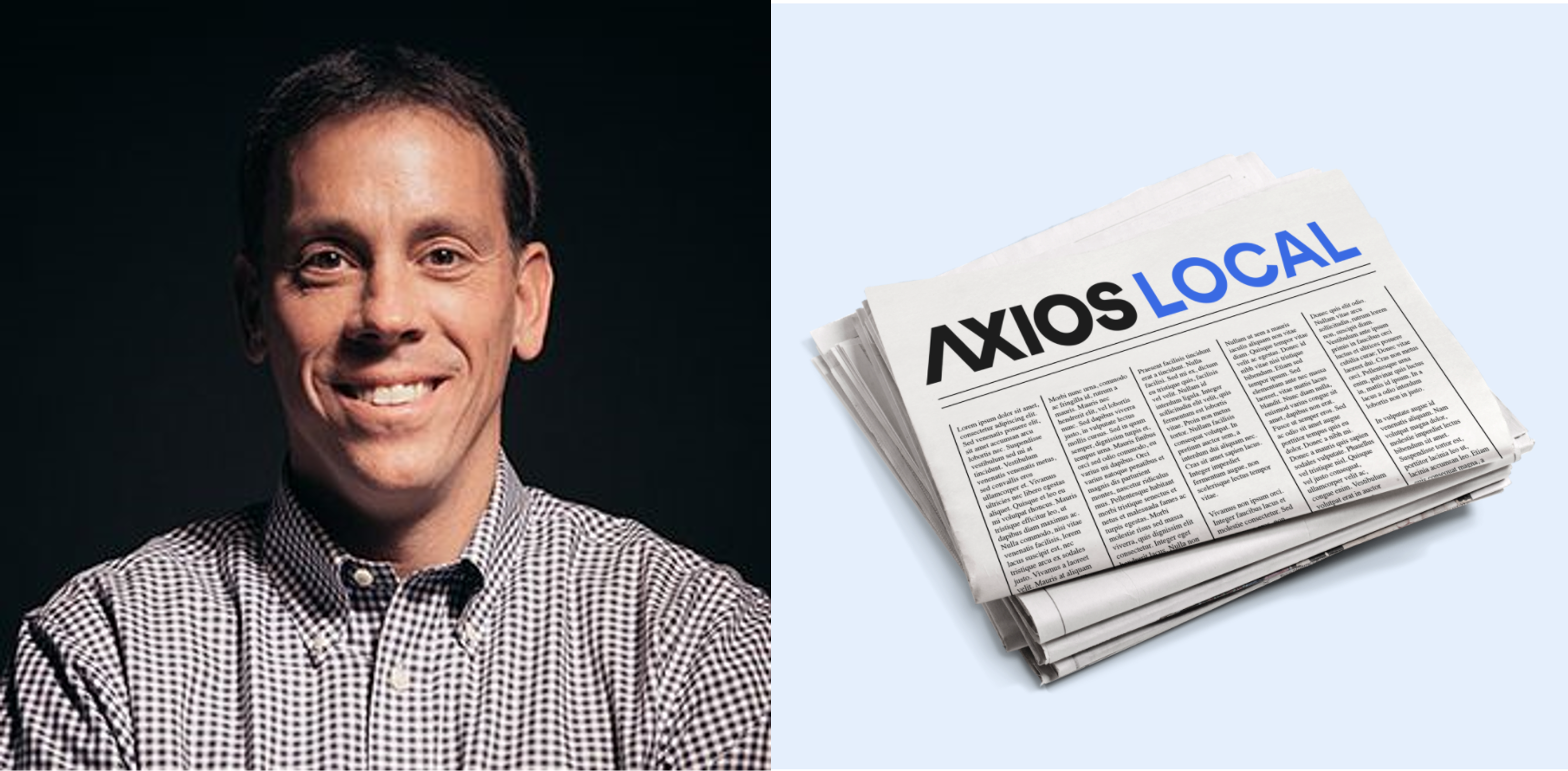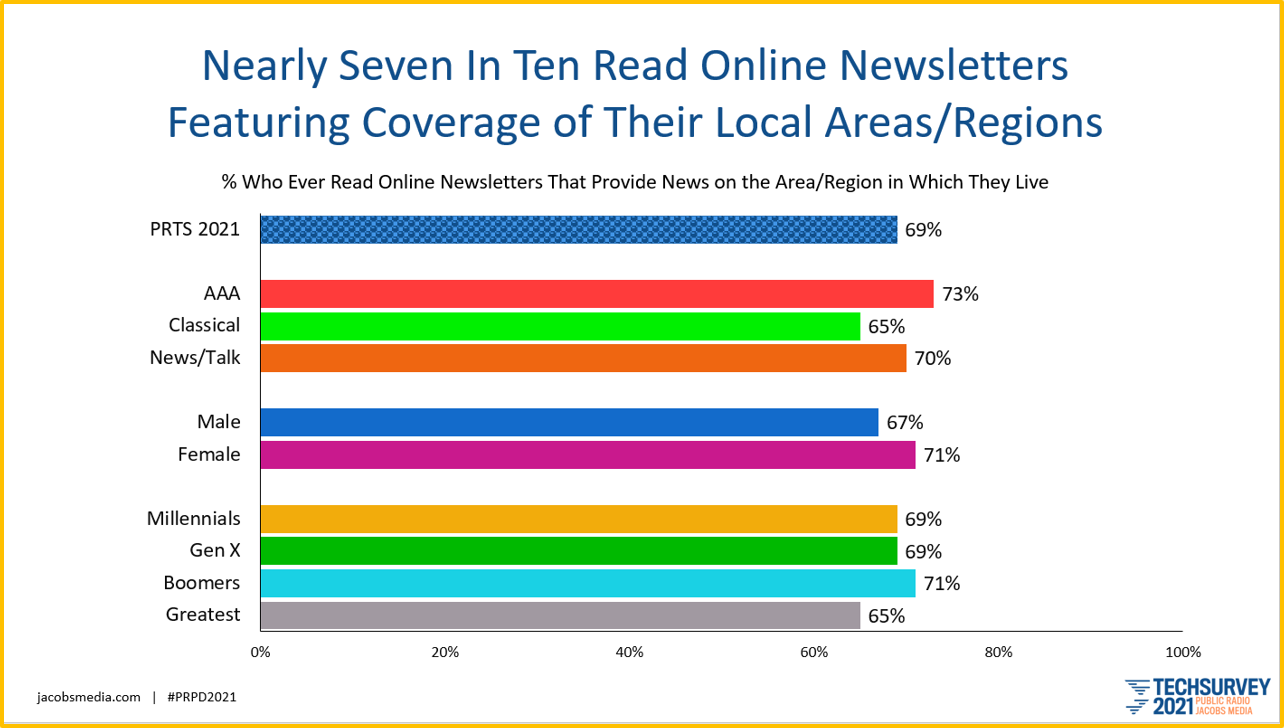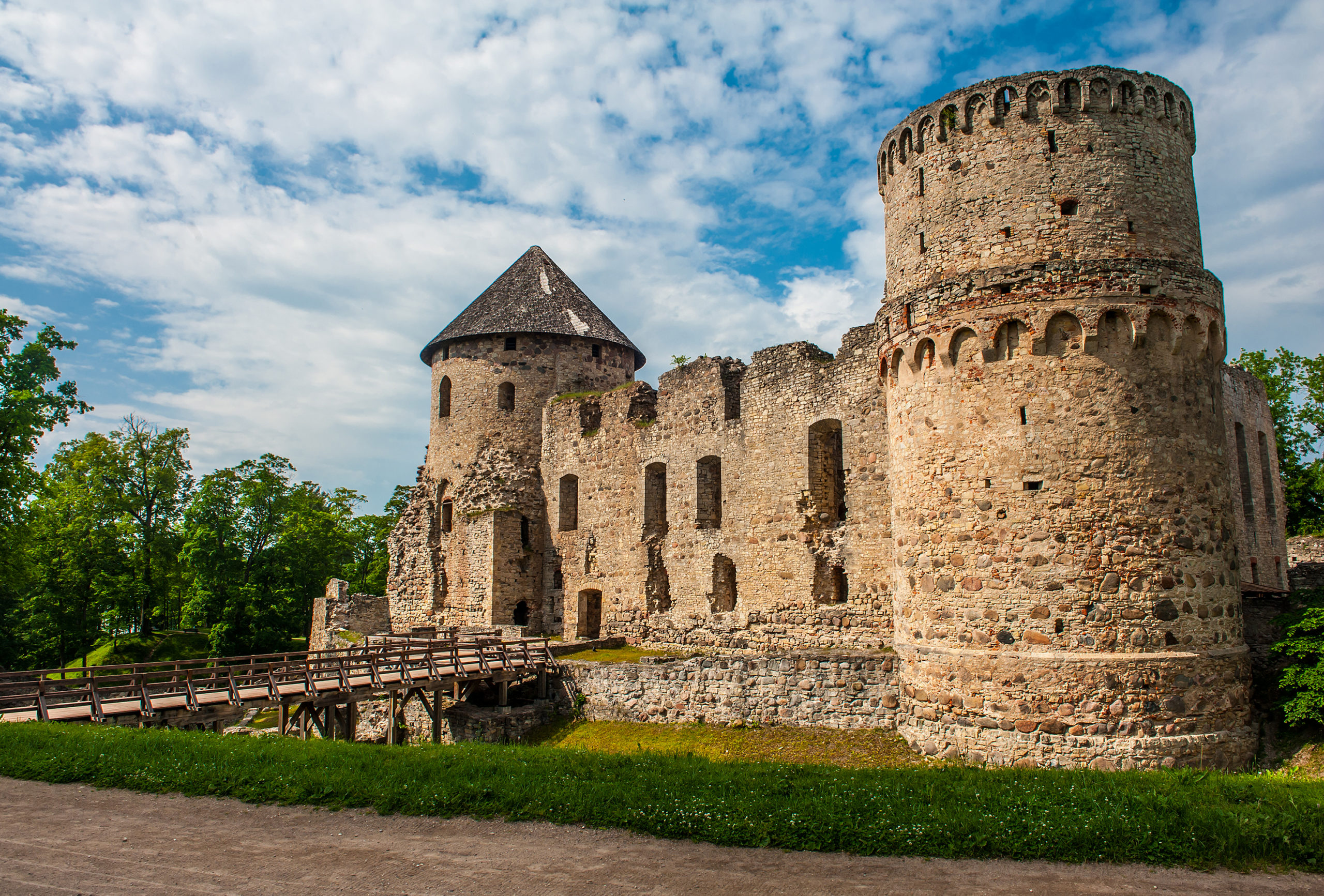
Laying down the gauntlet.
What a quaint, even archaic way of challenging a peer to a duel. Maybe you recall reading “King Arthur and the Knights of the Round Table” as a kid. The gesture was a direct message to a competitor to get on your horse, suit up, grab your lance, and engage in a jousting match for all the marbles. While a whimsical way of taking on a combatant, the conclusion of the joust often ended up with the winner still on his horse, while the loser was left writhing on the ground, fortunate to get out alive. Alas, many did not.
In the local news business, Axios just dropped the gauntlet…on all hometown media outlets attempting to cover local and regional news. And while your average music station will ignore this challenge (they have enough on their plates with streaming channels, podcasts, and satellite radio), any medium making a living by covering what’s going on in town ought to sit up, take notice, and start girding their loins. Because this challenge spells trouble.

The missive came over the weekend from Axios’ head, Jim VandeHei. He’s the CEO and co-founder, and he cleverly used the new year as a launching pad for a new venture Axios has been gearing up for. If you’re in the news business, and you’ve somehow missed Axios’ foray into the local news sphere, you’ve been asleep at the switch. As the creator of Politico 15 years ago, VandeHei is an accomplished “journostrategist” who knows this turf well.
It is interesting that every time I blog about the virtues and value of the “live & local” position, I get pushback. I am reminded that it’s not about being local, it about being relevant. Or that there really is no such thing as being “live and local” – people just want to be entertained and informed, and coverage areas really don’t matter in our fast-moving world.
VandeHei’s message to all local media outlets is that local DOES matter. And any hometown news organizations that ignore his brazen threat deserve to have their lunch eaten.
In fact, he’s staking his strategy on the ability of Axios to knock off legacy media outlets that are tired, old, and mailing it in. It’s one thing to say you’re “Your city here news leader.” It’s another to have boots on the ground, reporting on school board meetings, the local COVID efforts, city council meetings, and things to do this weekend within 20 miles of your location.
Here’s VandeHei’s opening joust:
“We want to bring smart, modern, trustworthy local news to every community in America.”
He goes on to observe, “This sounds insanely ambitious (or just insane). But you don’t solve gigantic societal and business problems by thinking small.”
VandeHei’s local news domination strategy actually sounds smart – and doable. Newspapers are on their knees, desperately erecting pay walls and stitching together subscription plans while the newsroom shrinks. Local TV is still mostly committed to the “if it bleeds, it leads” school of journalism. Yes, there’s an audience for that, but it is diminishing and aging.
And then there’s radio, the most inherently local medium of them all. On the commercial side, there are maybe a dozen news markets that still matter. These are the ones that are at least committed to a true 24/7 all-news format, guided by the ancient format wheel (“You give us 22 minutes, we’ll give you the world”).
These stations tend to be more like utilities – traffic, weather, business, sports – all shrunk to accommodate a massive commercial inventory that seems to expand with each passing year. In medium and smaller markets, these “news” stations became hybrids, mixing in (most often) conservative talk shows in middays, nights, and on weekends. Or the lawyers, handymen, and financial advisors buy their own time, diminishing news reputations even more. And besides, who wants to hear news during those dayparts anyway?
medium and smaller markets, these “news” stations became hybrids, mixing in (most often) conservative talk shows in middays, nights, and on weekends. Or the lawyers, handymen, and financial advisors buy their own time, diminishing news reputations even more. And besides, who wants to hear news during those dayparts anyway?
But wait – what about public radio? As I talk about with some degree of frequency in this space, many public radio stations are killing it in the ratings and when it comes to brand trust. These NPR news stations, especially in larger markets, have been relentlessly focused on keeping their cool and their cred during the tsunami of “fake news,” and social media drivel. It has especially served them well during the “Trump Bump,” as well as in the year just finished.
Late in October, I wrote a post titled, “Hey, NPR: That’s a Shot Across the Bow.” It focused on the impressive efforts the New York Times is making to not just make an impact in the audio news arena, but to own it. From “The Daily” podcast (and public radio show) to their new audio app, The Times is making a serious effort to disrupt public radio.
 And now Axios is putting on the full court press to out-and-out own the local news position. But should they be taken seriously? Is public radio vulnerable on the local news front?
And now Axios is putting on the full court press to out-and-out own the local news position. But should they be taken seriously? Is public radio vulnerable on the local news front?
Well, once you get beyond the biggest markets – D.C., New York, Boston, L.A., San Francisco, and a handful of others – most public radio stations are a patchwork quilt of network programs from NPR, APM, and other syndicators. They are generally excellent shows, but they have nothing to do with what’s happening on the streets of Minneapolis, Minot, or Miami.
When it comes to local news, the vast majority of public radio stations feature the obligatory midday local news/talk show, local newscasts during “Morning Edition” and “All Thing Considered,” but precious little else. It is possible to listen for hours without hearing a shred about what’s going on in one’s hometown. And when it comes to breaking local news, most public radio stations fall behind the curve.
On the weekends, that’s especially the case, the time when most public radio stations conclude there’s little appetite for news on Saturday and Sunday when people are kicking back and enjoying recreational endeavors and family activities. That’s where the lighthearted quiz shows and storytelling programming all seem to land.
Still, many public radio stations have solid reporting teams, with the capability of providing more local news – if a news director and a program director can agree it’s a priority. So, does Axios have a prayer of making any headway in the biggest metros? Is there any way a challenger can erode public radio’s decades of local news coverage?
Consider that Axios already has solid presence in 14 U.S. markets, with another 25 on the way by mid-year, including Phoenix, Boston, Seattle, and of course, in my neighborhood – Detroit. VandeHei claims they’re shooting for 100 markets “soon thereafter.”

His local “manifesto” (his term, not mine) is spelled out in the email, and if this competitive development resonates with you, you can go right to the Axios Local website here.
There are some high points – and high ambitions – worth nothing.
VandeHei posits that virtually every city and town is experiencing change and the need to reinvent. His answer in the metros where Axios is already setting up shop:
“Each city is covered by locals, for locals.”
As for tangibles, VandeHei is promising a daily newsletter written by locals, journalism on a “clean website” (wonder who he’s poking at there?), breaking news alerts, guides “for schools, real estate, business and more,” and a job finder service.
He ends his email with a plea to local journalists (no specification as to whether they’re still employed or not) to sign on and join “our crusade.”
And finally, a well-timed shot at public radio, using their familiar fundraising language:
“Become an Axios Local Member – all donations flow straight to local journalism.”
What’s a local station to do in the face of this challenge?
As I wrote in a post late last year, mergers, acquisitions, and partnerships – M.A.P.s – are an option, not dissimilar to what WBEZ has planned in Chicago with the acquisition of the Sun Times.
Here in Detroit, newsletters have sprouted up in recent years as the news landscape has changed. Detour Detroit is a newsletter with an attitude, launched by former print journalists. BridgeDetroit – boasting of at least 20 reporters – is an interesting mélange of newspaper and radio pros, along with community leaders. There are others, and they’re springing up in big metros and in small towns.
And don’t think newsletters aren’t “a thing.” They are becoming not just a bona fide medium, but a highly popular one. In our Public Radio Techsurvey fielded last summer, we asked about readership of local/regional newsletters – and the result was an eye-opener:

If this many public radio fans are including newsletters in their news and information diets, what does this trend suggest when it comes to collabs with existing news outlets – especially in the face of a smart, strategic Axios plan of attack?
By spelling out his blueprint and his timetable, VandeHei seems to have very little respect for the current level of local news coverage in most towns. In fact, he sums up his competition this way:
“Local reporting has been obliterated by technology, private equity cash and new consumer habits.”
The barriers to launch new media – news or entertainment – have been leveled by technology. Traditional news media haven’t helped their cause, in most cases, taking readers, viewers, and listeners for granted.
listeners for granted.
There’s no moat deep or wide enough to keep the invaders from attacking. For radio news operations – commercial or public – it’s time to don that suit of armor, grab a sharp lance, and get on your steed. Oh, and perhaps focus on creating even better local news content that matters to the townspeople, and making the time and effort to effectively market it.
Your local kingdom is being invaded, and the solution is to be so good that a mace, battleaxe, or dagger won’t throw you off your horse.
Pick up the gauntlet, and fight the good fight.
- What To Do If Your Radio Station Goes Through A Midlife Crisis - April 25, 2025
- A 2020 Lesson?It Could All Be Gone In A Flash - April 24, 2025
- How AI Can Give Radio Personalities More…PERSONALITY - April 23, 2025




This sounds similar to Patch, a hyperlocal news coverage venture which sold to AOL and, at its peak, produced 900 website/newsletter products. AOL unloaded Patch eventually, and Patch is still operating (I think). I don’t think it disrupted radio in the slightest, if that’s worth anything. Axios might do a better job anticipating the heavy lift of operating a nationwide distributed network.
I remember Patch well, Brad. They got way ahead of their skis. With Axios, I think we’re looking at a different moment in time. They’re already a solid news operation, they’re already in several markets, newsletters are popular, and COVID has reminded us of the importance of our communities and what happens there. It IS a heavy lift, but a challenge that public radio should take seriously. Thanks for weighing in.
exactly, I am a regular reader of Axios, they are targeting print media as smaller papers, like those owned by Lee Enterprises barely report. Some of their papers have done away with reporters on Mondays altogether.
Another entrant to this space is a small market competitor 6 AM. They’ve started in the Southeast Charleston, Columbia, Greenville but now in 24 mid/small markets with a claimed audience of 1.5 million.
https://6amcity.com/
All home based in Greenville, SC
The barrier to entry for newsletters is low, Mike. There are a lot of these springing up. And Axios has some smart journalists. Thanks for commenting.
These axios guys are very sharp and I read all about this the other day and signed up for the Richmond news when it becomes available. (Closest to my home:) Glad you blogged about it. Well worth watching. Be safe at CES!
See my response to Alan Peterson. I would take Axios very seriously. They are a smart group.
A co-worker left the place I work at two years ago to hop onboard a promising new podcast being produced in D.C. by Axios.
Her new gig didn’t last a year. The project folded very quickly.
I’ll believe this when I see it.
Alan, I get it. We’ve seen tech companies promise big things and fail to deliver. But broadcasters are famous for taking a “wait and see” attitude toward innovation, and losing big-time. Is Axios for real or is this another empty promise, as you suggest? My hope would be the public radio, in particular, would take the threat seriously, and use it as a cudgel to fundraise and acquire grants to bolster their local news operations. Why not improve the product before you get attacked?
Wonder if any radio medium is thinking of a way to “partner” with Axios as an additional news source?
Right here William!
Partnerships and collaborations should be on everyone’s table. Few operations have the fire power or bandwidth to go it alone.
As others have mentioned, many have tried and failed to do what Axios is now working on. However, when (not if) one of them succeeds it will not be radio they are competing against, it will be big tech.
Tommy, good observation on a space that more and more want a piece of. Thanks for weighing in & Happy New Year.
His dig at “private equity cash” was likely a specific reference to Digital First Media (aka MediaNews Group)–although, of course, broadcasting has plenty of similar examples.
As far as public radio goes, my concern would be more about smaller and outlying areas; a lot of the state/regional station groups can do a good job, but are still usually tied to the group’s hub. However, there are a few large operators that have been able to maintain local bases; Minnesota Public Radio is probably the best example, while neighboring Wisconsin Public Radio also qualifies. Georgia Public Broadcasting’s radio division might also count–as some of its constituent stations remain college-owned, and might still have local facilities. And, among the various collaboratives between groups/stations, something like Virginia Public Radio (not to be confused with Virginia Public Media) might be more appropriate here–as its affiliate is broader (including some community stations), and apparently features the work of some dedicated freelancers in different locations.
Eric, I share the same concern about public stations in medium & small markets. They are going to need help sustaining their local news initiatives. Major NPR news stations, like WNYC, WAMU, KPCC, and KQED are well-equipped and strategically sound. Could they do a more aggressive job marketing their local coverage. Yes, they could (but that may be the commercial radio PD in me). Collaborations and partnerships should be explored. Thanks for engaging on this topic.
One of the “old school news guys” I had the pleasure of working with years ago was WIBC, Indianapolis News Director Fred Heckman (RIP). Fred and I were standing outside in the parking lot on a sunny day. He pointed at the sky and said, “If there was a column of smoke up there, and we didn’t know what it was, we’d be screwed, if we missed it twice, we’d be dead.” Fred was right then and he still is.
And of course, he was named Fred. Thanks, Robert.
Every morning M-F he ended his 10 minute, 7 AM newscast with “My Town Indy”. (90 seconds of inside info and anecdotes on life in the city.
In 1970, at 7 in the morning, inside of the news, he ran a 30-minute special called “The Drop In”. the superintendent of schools had proclaimed there were no drug sales in the school system. Fred had a young newsman register as a student, wired him and he bought drugs in 5 local high schools. The superintendent resigned a couple of days after the special ran. WIBC’s morning numbers were in the 20 share range in the 70s and 80s. Much of it due to it’s hard driving local news department.
That’s the answer right there – people who live to cover their cities, their towns, their communities. It’s amazing what you can do.
The MN newsletter is well-written, curated. And there is some local reporting done by the journalists that’s good. But the service is mainly curated and relies on the local news sources that already exist. They are not eating our lunch. They are taking our lunch out of our brown bag and putting it in a super cool-looking lunch box from Etsy. They link back….so let it’s fine.
But it is not a local news operation yet….and in markets that don’t have orgs from which to curate, I am not sure what they will offer.
Gretel, another interesting story that underscores the idea that every market and situation is going to be a little different. Or perhaps a lot different. And I keep thinking that partnerships and collaborations continue to make a great deal of sense. Thanks for weighing in.